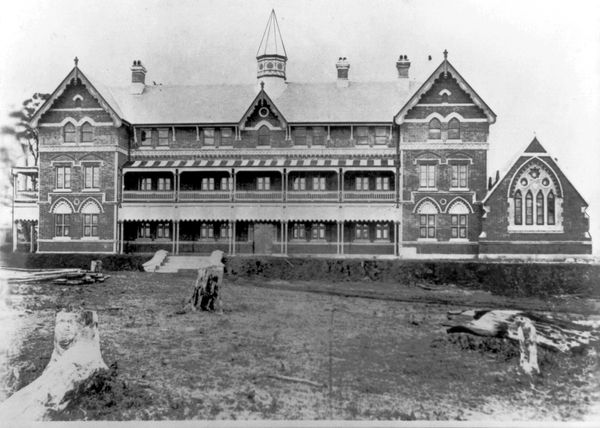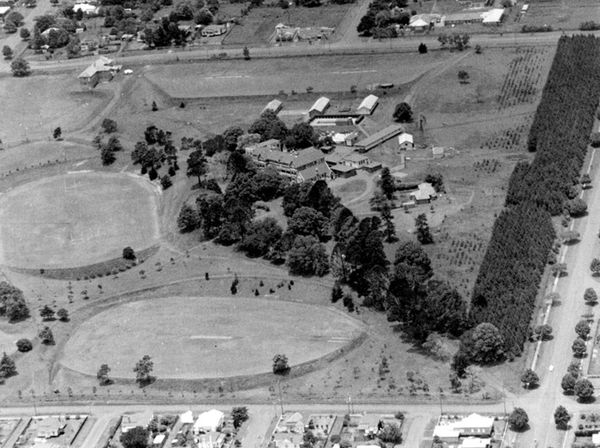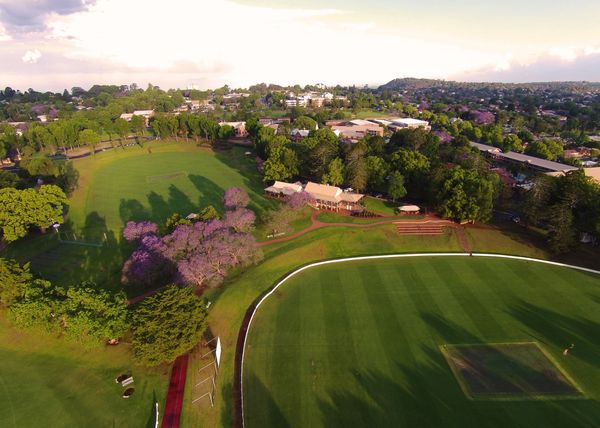“They will forever be “Fidelis in Omnibus.”Charles Carteret Corfe (Headmaster 1890-1900)

Toowoomba Grammar School has a rich history dating back to 1875
Foundation
Toowoomba Grammar School is one of the oldest and most well-established boys’ boarding schools in Australia, established by the community, for the community in 1875. It is one of the original Grammar Schools of Queensland, established under an Act of the Queensland Parliament known as the Grammar Schools’ Act 1860 (Qld). The land on which the School was built remains Crown land today under perpetual leases to the Board of Trustees.
Original school building
School House, the original school building, was constructed thanks to the generous donations of local farming families and business people. It was designed by Willoughby Powell and remains one of Toowoomba’s most significant heritage buildings.

Headmasters
Toowoomba Grammar School has had just 16 Headmasters, including the current Headmaster, Dr John Kinniburgh who commenced in the role in 2021. The first Headmaster, Mr John Mackintosh also conducted the School’s first lesson on 1 February 1877. There were 44 students, 24 dayboys and 20 boarders. Lessons were in a classroom designed for 160 students which is now known as Old Hall. Mr Mackintosh was sadly killed in a horse-riding accident at Helidon in 1879 at the age of 43.
The longest serving Headmasters include:
- Mr George Pitty Barbour - 1910-35
- Mr William Dent - 1970-91
- Mr Peter Hauser - 2003-20
GPS Association
In 1920, Toowoomba Grammar School was invited to become a member school of the Great Public Schools Association of Queensland (GPS) which was founded two years earlier. To this day, we compete in ten GPS sports and activities against the eight other GPS schools (three of which are Grammar schools). The nine members schools comprise some of the most well-known schools in Australia:
- Toowoomba Grammar School
- Brisbane Grammar School
- Ipswich Grammar School
- St Joseph’s College Gregory Terrace
- St Joseph’s College Nudgee
- Brisbane State High School
- Anglican Church Grammar School (‘Churchie’)
- Brisbane Boys’ College
- The Southport School

Queensland Grammar Schools
In 1860, the first parliament of the young Colony of Queensland passed the Grammar Schools Act 1860. This Act allowed for the establishment of a grammar school in any town where the residents could raise £1,000, which the Queensland Government would match.
As a newly-independent colony, the government was not yet in a position to develop their own secondary schools. Therefore, the Grammar Schools initiative was a cost-effective way for parliament to ensure students had access to a secondary education, developed in partnership with the communities the school served. Each school was to be administered by a seven-member Board of Trustees, four of which were nominated by the Governor of Queensland and three elected by those very community members who had contributed to the funds raised.
Between 1863-1892, ten Queensland Grammar Schools were opened, including Toowoomba Grammar School in 1875. Two of the original schools were forced to close in 1936 in response to the effects of the Great Depression, leaving the eight current Grammar Schools which are still thriving.
Today, the frameworks and regulations of Queensland Grammar Schools are regulated through the Grammar Schools Act 2016 (GSA) and the Grammar Schools Regulation 2016. Each school is governed by a Board of Trustees, appointed by the Governor in Council. The GSA provides that the Board of Trustees for each Grammar School is a statutory body and the GSA also regulates the business of the Grammar School Boards, the keeping and auditing of accounts and making of budgets.
In our modern system, the Queensland Government's current approach is to prioritise the establishment of state schools under the Education (General Provisions) Act 2006, while also regulating and providing some funding for non-government schools.
The history and traditions of Toowoomba Grammar School will always be recognised for the significant role they have played in the growth and development of this fine school and the boys who have passed through the school gates.
It is these traditions that evoke so many fond memories and enhance the bond of the ‘boys of the blue and gold’ resulting in significant connections and engagement for our TGS Old Boys.


The School
These are our days
that shall be your days
whose shadows, in advance, wait
behind the desks, that we'll vacate.
This is our voice
that shall be your voice,
and the time and the place in the world
that we'll travel shall be treasured like inherited gold.
And these are our colours
that shall be your colours,
whether we come before or wait,
till we say goodbye at the School gate.
I'll be your world
and you'll be my world;
the School makes us one.
This shall be learnt from all that we've done.
David Rowbotham, TGS Old Boy 1939-1940
(written for the School, 1995)